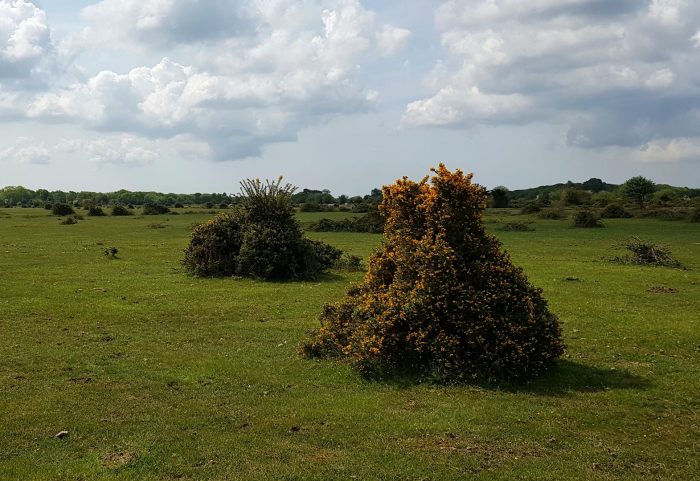How New Forest revival took off from old wartime airfield

Former Stoney Cross Airfield, New Forest
It didn’t take long for the New Forest to reclaim Stoney Cross airfield
There isn’t much to show today of one of the biggest Second World War aerodromes in the New Forest.
Active between 1943 and 1946, Stoney Cross was one of the principal fighter and bomber bases in the Forest. It closed in 1948.
At its peak it was a non-stop din of Lightnings and Hurricanes, Wellingtons and Liberators, buzzing and growling. After the war the airfield was a point of departure for many soldiers flying out to the Middle East.
Stoney Cross was essential infrastructure in its day, but it was quickly and easily dismantled. Today, unless you come up close, it’s hard to see there was was anything of significance here.
The buildings where thousands lived and worked have gone; one runway was turned into a road, and other areas of concrete were left as the framework for two caravan and camping sites. Nature moved back with persistence and assurance. There are adders, stonechat and heath bumblebees. The forest’s famous native ponies, deer and cows browse at will.
Nature is expert at reclaiming its own, and the things we built in recent centuries give it a chance. Look at what happened to all those closed railways. But some of the 21st Century’s infrastructure might be beyond the power of its soothing, green embrace. The proposed tunnel and dual carriageway at Stonehenge is a prime example of the scar on the landscape that might never be erased.

Proposed tunnel under Stonehenge WHS
And there will inevitably come a time when future generations would want to do just that. Just as the intrepid Hurricane pilots who flew from Stoney Cross in 1944 could never have imagined squadrons of miniature aircraft, drones, attacking cities in a 2023 war, and the prospect of AI-directed robots going into battle not much later, we cannot imagine what forms of domestic transport – ultra fast railways, rapid airships – might develop 100 years from now to make the very notion of today’s trunk road unutterably quaint.
But the restorers would face an impossible task. The two portals for the tunnel would be built well inside the World Heritage Site (WHS) boundary, causing “substantial harm” to its significance, according to the government’s independent examiners. And even if the tunnel, and the great gouges leading from it were to be filled in, the damage to the wider Stonehenge setting could never be reversed.
The stone circle was erected in the late Neolithic period, about 2500 BC. The A303 was designated the “Alternative London – Exeter route” on 1 April 1933. If it survives as a busy conduit for another 200 years, which is not very likely, that’s a tiny fraction of the lifespan of the monument. And who knows how much longer that might survive? Would you bet against another 4500 years?
The stones themselves will be untouched by the proposed tunnel and road, but the wider setting, containing who knows what clues we cannot yet read, will be forever marred.
And all for the convenience of people alive in a few selfish decades, who showed such disregard for future generations.